The best Canon DSLRs are great. But the best Canon portrait camera is likely to be a mirrorless camera. That’s because they have an unbeatable mix. Mirrorless Canon’s have high-resolution sensors and Dual Pixel CMOS AF II autofocus systems.
The Canon 1DX Mark III has been the company’s flagship DSLR camera for many years. But it is low on the wish list for portrait photographers. It doesn’t offer high resolution. And it also has to compete against Canon’s range of professional mirrorless models. This includes the Canon R6, R3, and our top camera for portraits, the R5.
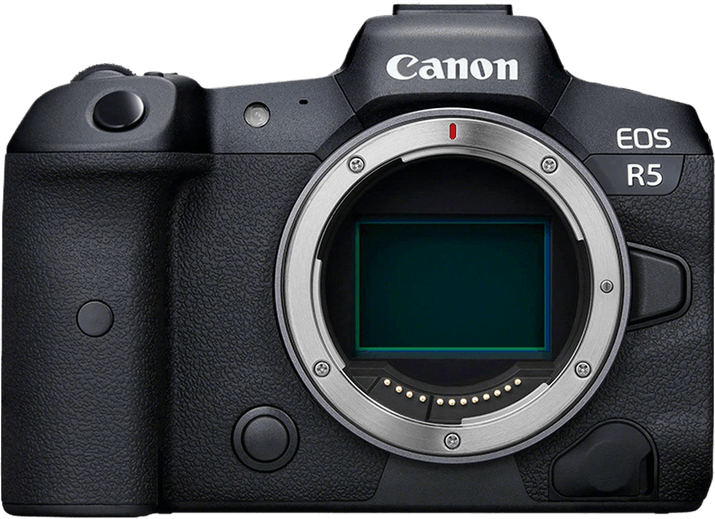
Canon EOS R5
These mirrorless Canons all follow a similar template. They provide you with everything you need for studio, wedding, or portraiture photography. The best Canon camera for portrait photography has high resolution and eye detection. Everything else is gravy.
But do you prefer the familiarity of a DSLR? There’s always the Canon 5DS, 5D Mark IV, or the 1DX Mark III. Or if you are on a budget and only want something to grab shots at a party? The PowerShot G7 X Mark III is a cheap but reliable alternative. We break down each Canon camera for portraits for you…
What is the Best Canon Portrait Camera to Buy?
Here’s a quick summary of the best Canon portrait cameras before we check each camera in detail.

- Large 45 MP sensor
- High frame rate of 20 fps
- In-body stabilization
- 8K / 30p Ultra HD video

- Relatively affordable
- Excellent in-body image stabilization
- Fantastic expandable ISO range
- Compact and ergonomic design

- A high frame rate of 30 fps
- Less noise with BSI stacked sensor
- 8 stops of image stabilization
- 6K / 60p RAW video
- 620-shot battery life
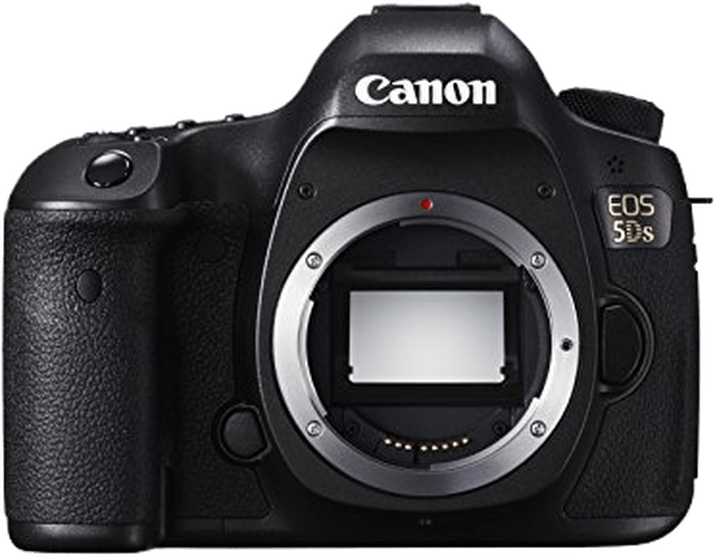
- High resolution
- Anti-flicker mode
- Time-lapse photography
- Fine Detail Picture Control
- LCD graphic overlays in viewfinder

- Quality sensor produces detailed and vibrant images even at high ISOs
- Dual Pixel AF with eye detection
- User-friendly touch-to-focus screen
- 900-shot battery life
- Cinema-quality (DCI) 4K video

- 30 fps with the electronic shutter
- 5-axis sensor-shift image stabilization
- Fully articulated touch screen
- Quality 4K video

- Fantastic image quality
- Impressive 45-point AF system
- Built well and nice to handle
- Handy built-in Wi-Fi and GPS

- Excellent autofocus system
- Excellent ISO range
- Ergonomic camera body
- Responsive and articulating touchscreen
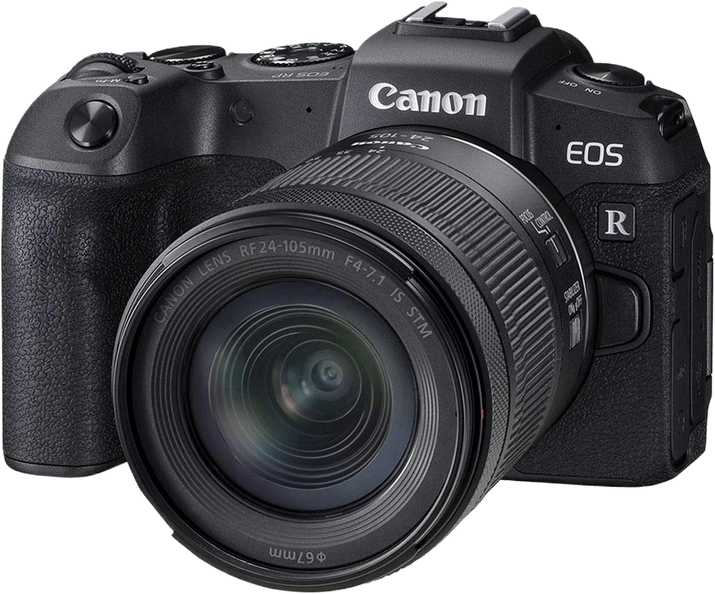
- Affordable full frame mirrorless option
- Lightweight and easy to handle
- Nice 4K video
- Built-in macro stacking and time-lapse

- Excellent low-light capabilities
- Dual Pixel AF and AI detection
- High frame rate for video recording
- Great battery life

- A high dynamic range
- Fast continuous shooting speeds
- Stylish design
- Pocket-sized body
- Flip-up rear LCD touchscreen
- Live-streaming compatible
Best Canon Camera for Portraits (Top 11 Picks in Detail!)
Now let’s look at each best Canon cameras for portraits in detail.
1. Canon EOS R5

| Camera Type |
Camera Type
|
| Megapixels |
Megapixels
45 MP |
| Sensor Format |
Sensor Format
|
| Sensor Size |
Sensor Size
23.9 x 35.9 mm
|
| Frame Rate |
Frame Rate
20 fps |
| Autofocus Points |
Autofocus Points
1,053 |
- Large 45 MP sensor
- High frame rate of 20 fps
- In-Body Image Stabilization (IBIS)
- Body, face, eye, and animal tracking
- 8K/30p Ultra HD video
- Expensive
- Complicated autofocus setup
- Noise reduction applied to RAW files
- Hard to customize
- Overheats shooting video
The Canon R5 and R3 full frame mirrorless cameras are neck-and-neck for action photography. But the R5’s larger sensor gives it the advantage in portrait photography. You don’t get some of the bells and whistles from the R3, such as Eye Control AF. But it still has impressive features.
The sophisticated and customizable autofocus system covers the whole frame. The Dual Pixel CMOS AF II gives you fast and accurate autofocus. It also offers human and animal (plus bird) eye detection based on machine learning. This is very helpful in capturing beautiful portrait photography.
Frame rate, buffer size, in-body image stabilization (IBSIS), and CFexpress support are excellent. Of course, these are more important for sports or wildlife. But they’re still very handy for portrait photography.
You can also take 10-bit HDR portraits in HEIF format. This “high efficiency image file” offers more colors, tones, and editing options. And the fully articulating touch screen and 4K and 8K support are great for videos behind the scenes.
It has a decent 5.76M-dot OLED electronic viewfinder (EVF). But it has only half the resolution and refresh rate as the one on the Sony a1. But it’s still good enough for portrait photos. Finally, there are a few nice touches typical of most Canon cameras:
- Weather-sealing for outdoor portrait shooting
- Microphone and headphone ports for video
- 2.4 and 5 GHz Wi-FI with Bluetooth and FTP connectivity for fast image uploads and sending them to clients
The only slight downside is that it has a short battery life and no integrated grip to supply an extra battery. Otherwise, this is the best camera for portraits!
If you’re curious how this holds up against competitors from other camera brands, check these trending comparisons:
- Canon EOS R5 vs Nikon Z9
- Canon EOS R5 vs Sony a1
- Canon EOS R5 vs Fujifilm X-H2
- Canon EOS R5 vs Sony a7R V
- Canon EOS R5 vs Sony a7R IVA
2. Canon EOS R6

| Camera Type |
Camera Type
|
| Megapixels |
Megapixels
20.1 MP |
| Sensor Format |
Sensor Format
|
| Sensor Size |
Sensor Size
23.9 x 35.9 mm
|
| Frame Rate |
Frame Rate
20 fps |
| Autofocus Points |
Autofocus Points
1,053 |
- Relatively affordable
- Excellent in-body image stabilization
- Compact and ergonomic design
- Fantastic expandable ISO range
- Rapid burst speeds
- Low megapixel count compared to closest competitors
- Interface is challenging to navigate
- EVF drains the battery
- Camera heats up shooting 4K / 60 fps
The Canon EOS R6 is a full frame mirrorless camera. It’s aimed at enthusiasts rather than portrait professionals. But it’s an excellent hybrid portrait camera for stills and video. (It does have some problems with overheating when recording video.)
The sensor and EVF have lower resolution than the R5. And you can’t shoot video in 8K or use CFexpress cards. But you get the same frame rate, Dual Pixel CMOS AF II, and IBIS system to take sharp studio portraits.
You also have the same ability to take 10-bit HDR portraits in HEIF format. Plus, you get a bit longer battery life for longer portrait shooting.
After that, there’s a long list of shared features:
- Wireless and Bluetooth connectivity
- Microphone and headphone ports
- Weather-sealing
- A touch screen… and dozens of others
It’s a step down from R5. But it’s still excellent for portraiture photography.
3. Canon EOS R3

| Camera Type |
Camera Type
|
| Megapixels |
Megapixels
24 MP |
| Sensor Format |
Sensor Format
|
| Sensor Size |
Sensor Size
24 x 36 mm
|
| Frame Rate |
Frame Rate
30 fps |
| Autofocus Points |
Autofocus Points
1,053 |
- A high frame rate of 30 fps
- Less noise with BSI stacked sensor
- 8 stops of image stabilization
- 6K / 60p RAW video
- 620-shot battery life
- Relatively expensive
- Low-resolution for some photographers
- No 8K video
- Slowed frame rate with an SD card or low battery
The Canon EOS R3 has an integrated grip, so it’s a bit chunkier and heavier than the R5 or R6. But the grip is ideal for vertical shots and perfect for portrait photography. Plus, only the R3 has Eye Control AF. It allows you to direct the focus point around the viewfinder by moving your eye!
The R3 is designed for sports and wildlife photography or photojournalism. So the resolution is slightly higher than on the R6. But it’s much less than on the R5. This means it can’t shoot video in 8K.
But because of the lower-resolution sensor, the R3 has larger pixels. So it beats the R5 on dynamic range, ISO limit, and minimum focus sensitivity. Plus, it has illuminated buttons. So it’s ideal for close-up beauty portraits and high-quality images in low light.
It offers blackout-free shooting, a faster shutter speed, and high-speed CFexpress card support. So you can easily take action portraits or fashion shots on the runway.
A recent firmware update brought a Custom High-speed Continuous mode. It lets you capture RAW or JPEG images at an astounding 195 fps. But the focus and exposure are locked after the first shot.
It also shares several other features with the R5. These include wireless and Bluetooth connection, microphone and headphone ports, and weather-sealing. It also has the same Dual Pixel CMOS AF II system. But the R3 has fewer than a fifth of the focus points as the R5.
Finally, it offers unlimited video recording. And it has a long-lasting battery for extended portrait studio shoots.
4. Canon EOS 5DS

| Camera Type |
Camera Type
|
| Megapixels |
Megapixels
26 MP |
| Sensor Format |
Sensor Format
|
| Sensor Size |
Sensor Size
24 x 35.9 mm
|
| Frame Rate |
Frame Rate
5 fps |
| Autofocus Points |
Autofocus Points
4,779 |
- Affordable full-frame mirrorless
- Lightweight and easy to handle
- Macro stacking and time-lapse
- Convenient Wi-Fi and Bluetooth
- Nice 4K video performance
- 5 fps max burst is slow compared to competitors
- Relatively poor 250-shot battery life
- Doesn't function while charging
- 4K video is cropped 1.6x
The Canon EOS 5DS is getting on a bit now. But its big advantage remains the size of the sensor. That makes it not just Canon’s highest-resolution full frame DSLR camera. It’s Canon’s highest-resolution camera of all time!
Do you want even more detail (at the expense of greater risk of moiré)? You can buy the more expensive 5DS R model. It has no anti-aliasing filter. Either way, a very high resolution is best suited for printing portraits commercially or on large scales for fine art photographers.
Apart from the very high resolution, the specifications are a little disappointing:
- There’s no Dual Pixel autofocus sysytem
- The ISO range is only 100 to 6,400
- The frame rate is very low.
The highest video resolution is only 1080, there’s no touch screen, and the LCD resolution is low too. There’s no wireless connection, clean HDMI output, or headphone jack. And it only accepts slower CompactFlash and SD cards.
But you get “scene recognition” for precise portrait exposure and metering. There’s an anti-flicker mode to minimize uneven colors or exposure under portrait light. And it has an autofocus system with 41 cross-type points for accurate autofocus.
It also has what’s called an Intelligent Viewfinder II. This can show cropped shooting frames, composition grids, and an electronic level. It helps you take the perfect portrait photo.
5. Canon EOS 5D Mark IV

| Camera Type |
Camera Type
|
| Megapixels |
Megapixels
30.4 MP |
| Sensor Format |
Sensor Format
|
| Sensor Size |
Sensor Size
24 x 36 mm
|
| Frame Rate |
Frame Rate
7 fps |
| Autofocus Points |
Autofocus Points
61 |
- Quality sensor produces detailed and vibrant images even at high ISOs
- Dual Pixel AF with eye detection
- User-friendly touch-to-focus screen
- 900-shot battery life
- Cinema-quality (DCI) 4K video
- Unreliable, imprecise subject tracking
- Limited dynamic range
- No in-body stabilization
- No bluetooth
- 64x crop factor with 4K video
The Canon EOS 5D Mark IV is an all-around semi-professional camera for portraits. It’s 19 months newer than the 5DS. Apart from the lower-resolution sensor, the specs are much improved. That means better color depth, dynamic range, low light ISO, and image quality.
You can compare the Mark IV and 5DS. The Mark IV bodes well as a portrait camera. You get 61 autofocus points at f/8, a higher frame rate and ISO limit, and a 4K Photo mode.
The 5D Mark IV also has higher-resolution video footage and touch screen LCD. Finally, you get built-in wireless and NFC connections, a headphone port, and a smartphone remote control.
Apart from that, the two models share quite a few features. But they’re only “nice-to-haves” rather than “need-to-haves” for portrait photography.
They include microphone and flash sync ports, time-lapse recording, a top LCD panel, and weather-sealing. You also get AF micro-adjustment, anti-flicker modes, auto-exposure (AE) bracketing, an electronic level, and a webcam.
6. Canon EOS R7

| Camera Type |
Camera Type
|
| Megapixels |
Megapixels
33 MP |
| Sensor Format |
Sensor Format
|
| Sensor Size |
Sensor Size
22.2 x 14.8 mm
|
| Frame Rate |
Frame Rate
15 fps |
| Autofocus Points |
Autofocus Points
651 |
- 30 fps burst mode with electronic shutter
- 5-axis sensor-shift image stabilization
- Fully articulating touch screen
- Unlimited, oversampled 4K video
- Animal eye-detect AF for wildlife and pets
- Fiddly AF joystick and exposure compensation dial
- Easy to change power switch to video by accident
- No built-in flash
- Limited range of native lenses
- Rolling shutter effect shooting video
The Canon EOS R7 is Canon’s flagship APS-C mirrorless camera. It has a relatively large sensor. (ironically, it’s larger than the one in the full frame R6!)
The AF system is also excellent. But you might have to play around with custom settings to get the most out of it. Its face-detect autofocus system is perfect for portraiture.
Like the R6, it has sensor-shift IBIS to reduce camera shake when shooting handled portraits. It has a weather-sealed body for outdoor shoots. And dual memory card slots ensure you have plenty of room for a portrait session.
But it has far fewer focus points, a much lower ISO limit, and no flash sync port for studio setups. Plus, the viewfinder has lower magnification and resolution, and there’s no Bluetooth.
It does offer continuous shooting at 30 fps, double the fastest shutter speed, and double the battery life. The body is also a little lighter. So it does well for action portraits or portraits out on location.
The video performance is excellent. And it includes microphone and headphone ports. The only problem with the oversampled 4K footage is rolling shutter. That leads to a “Jell-O” effect if you do fast pans or use telephoto lenses.
You can switch to a subsampled format to avoid rolling shutter. But you get less detailed, noisier footage.
There are a couple of other problems. The first is the lack of native APS-C lenses to go with it. This is especially at the ultra-wide-angle end. That may change over time as Canon brings out new RF lenses.
The second is ergonomics. The new hybrid autofocus joystick and exposure compensation dial are hard to use. And the on and off switch is also responsible for the video. That means you can easily select the wrong option by accident.
Finally, the exposure mode dial doesn’t have a lock button. So it’s easy to end up in the wrong mode! But this is the most affordable DSLR camera for portraits on our list.
Check out our full Canon R7 vs R10 comparison next!
7. Canon EOS 6D Mark II

| Camera Type |
Camera Type
|
| Megapixels |
Megapixels
26.2 MP |
| Sensor Format |
Sensor Format
|
| Sensor Size |
Sensor Size
24 x 35.9 mm
|
| Frame Rate |
Frame Rate
6.5 fps |
| Autofocus Points |
Autofocus Points
45 |
- Fantastic image quality
- Impressive 45-point AF system
- Built well and nice to handle
- Handy built-in Wi-Fi and GPS
- Low dynamic range
- Relatively limited video capabilities
- Only one memory card slot
- No USB charging
The Canon EOS 6D Mark II is an entry-level camera for portraits. It is a full frame DSLR with great color depth. And it has Dual Pixel AF with 45 cross-type focus points for viewfinder shooting.
The ISO range is quite wide. And 6.5 fps is not too shabby for a DSLR. It’s only a bit slower than the Nikon D850. But this slows dramatically when in live view.
It doesn’t offer great resolution or 4K video (except in time-lapse mode). And there’s no headphone jack. But that’s expected at the lower price point.
It has a weather-sealed camera body with GPS and remote control. So it’s good for outdoor or on-location portraiture or self-portraits at any time of the day.
And it has a fully articulated touch screen if you taking portraits at difficult angles. Plus, there is also Wi-Fi, Bluetooth, and NFC support for sharing photos with your portrait subjects.
8. Canon EOS R

| Camera Type |
Camera Type
|
| Megapixels |
Megapixels
30.3 MP |
| Sensor Format |
Sensor Format
|
| Sensor Size |
Sensor Size
24 x 36 mm
|
| Frame Rate |
Frame Rate
8 fps |
| Autofocus Points |
Autofocus Points
5,655 |
- Excellent autofocus system
- Excellent ISO range
- Ergonomic camera body
- Responsive and articulating touchscreen
- No in-body image stabilization
- 4K video is cropped
- No dual SD card slot
- Limited battery life compared to DSLR
The Canon EOS R was the first full frame mirrorless Canon camera. And it shows! It has the same Dual Pixel CMOS sensor as the 5D Mark IV. So you get similar autofocus performance and video and image quality.
Color reproduction is excellent for a portrait camera. And it can produce pin-sharp images of your subjects. But the dynamic range and noise performance are less impressive than competitors such as the Sony a7 III or Nikon Z6.
It also lets you down by a couple of changes to the handling. They don’t appear on any other Canon camera:
- The first is the method of setting the autofocus (AF) point. By default, you must press the AF point button on the back and use the front and rear dials to scroll horizontally and vertically. If you don’t like doing that, you can set up the four-way controller to do the same. But that slows things down. It has to move through every selectable point. Or you can tap or drag the AF point using the touch screen.
- The second concerns the M-Fn (or multi-function) bar. This is customizable. And you can use it as two buttons plus a swipeable control to scroll through the menu. But it’s not the easiest system to get used to!
With video, you can shoot in 4K / 30p. But the footage is soft and suffers from a 1.8x crop and significant rolling shutter. The lack of in-body stabilization also limits the appeal for videographers.
9. Canon EOS RP

| Camera Type |
Camera Type
|
| Megapixels |
Megapixels
26 MP |
| Sensor Format |
Sensor Format
|
| Sensor Size |
Sensor Size
24 x 35.9 mm
|
| Frame Rate |
Frame Rate
5 fps |
| Autofocus Points |
Autofocus Points
4,779 |
- Affordable full-frame mirrorless
- Lightweight and easy to handle
- Macro stacking and time-lapse
- Convenient Wi-Fi and Bluetooth
- Nice 4K video performance
- 5 fps max burst is slow compared to competitors
- Relatively poor 250-shot battery life
- Doesn't function while charging
- 4K video is cropped 1.6x
The Canon EOS RP is an updated version of the Canon EOS R (See full specs comparison here!). The RP weighs a bit less and offers focus bracketing and better low light performance due to the larger pixels. But they both have face detection and eye tracking as portrait cameras.
The RP has a smaller sensor and fewer focus points. Though its AF system still shines. But it has a slower shutter and continuous shooting speed, and worse color depth and dynamic range.
It also has no top LCD or anti-dust shutter mechanism. And it has a lower-resolution LCD and viewfinder and shorter battery life. The two models both lack IBIS and built-in flash.
The EOS RP and EOS R do share several other Canon features. These include anti-flicker mode, time-lapse recording, and wireless and Bluetooth connections. And they both have a vari-angle touch screen and microphone and headphone ports.
This is a more affordable camera for portraits with fewer bells and whistles.
10. Canon EOS 1D X Mark III

| Camera Type |
Camera Type
|
| Megapixels |
Megapixels
20.1 MP |
| Sensor Format |
Sensor Format
|
| Sensor Size |
Sensor Size
24 x 36 mm
|
| Frame Rate |
Frame Rate
20 fps |
| Autofocus Points |
Autofocus Points
191 |
- Excellent low-light capabilities
- Dual Pixel AF and AI detection
- Fantastic buffer for continuous shots
- High frame rate for video recording
- Great battery life
- Relatively expensive
- Lower megapixel count than closest competitors
- No in-body image stabilization
- A heavy camera body
The Canon EOS 1D X Mark III is a professional-grade full frame DSLR. The sensor has limited resolution. But you get a high frame rate, a large buffer, and the Dual Pixel AF system. This uses machine learning and data from 191 focus points. The emphasis on speed is shown in the dual slots for CFexpress cards.
The camera body is rugged and weather-sealed. It has an integrated grip, touch screen, microphone and headphone ports, and illuminated buttons. The focus point selector uses an optical sensor. So you don’t have to push it from side to side.
You can shoot 5.5K video with this Canon camera. You also get the usual perks, including anti-flicker mode, Wi-Fi, Bluetooth, and GPS. The battery life is also exceptional.
11. Canon PowerShot G7 X Mark III

| Camera Type |
Camera Type
|
| Megapixels |
Megapixels
20 MP |
| Sensor Format |
Sensor Format
|
| Sensor Size |
Sensor Size
13.2 x 8.8 mm
|
| Frame Rate |
Frame Rate
30 fps |
| Autofocus Points |
Autofocus Points
31 |
- A high dynamic range
- Fast continuous shooting speeds
- Stylish design
- Pocket-sized body
- Flip-up rear LCD touchscreen
- Live-streaming compatible
- Soft focus at wider focal lengths
- No subject tracking in continuous shooting mode
- No electronic viewfinder
- Weak battery life for a compact
- 10 minute 4K recording limit
The Canon PowerShot G7 X Mark III has the same resolution as the 1D X Mark III. But it’s a pocket-sized camera with a 1-inch type sensor. That means it has a fixed lens. In this case, it is the equivalent of a 24-100mm f/1.8-2.8 lens on a full frame camera.
The Mark III marks a significant upgrade on the Mark II—even though the body hasn’t changed that much. It now comes with Bluetooth (rather than NFC). And it offers a fast burst mode, 4K (with no crop), and live video streaming. But the battery life is shorter.
You get several features from the previous model. These include optical image stabilization and a selfie-friendly touch screen (rather than an EVF) for self-portraits. You also get built-in flash, RAW support, time-lapse recording, and a three-stop ND filter.
But there are a few problems. This is only a compact, after all! Video and stills are quite soft, especially at short focal lengths. And subject tracking doesn’t work in burst mode.
This is the most affordable Canon portrait camera on our list. And it’s geared toward amateur photographers and family photography.
Our Verdict
If you’re looking for the best Canon portrait camera, you’re better off with a mirrorless camera than a DSLR. First, you probably want to “future-proof” your investment.
If you take photography seriously, know that compatible lenses will be around for a while. Nikon has already announced that it won’t be making a replacement for the D850. And who knows how long Canon will continue making DSLRs?
Second, you need the right tools for the trade. Modern mirrorless Canon cameras such as the R5 don’t have to trade off high resolution and frame rates. Their autofocus systems are also second to none.
The Dual Pixel CMOS AF II system uses machine learning for eye detection, face recognition, and subject tracking. The R3 even has Eye Control AF, which might end up as a game changer! These are all ideal for portrait photography.

Canon EOS R5
Which camera for portraits you choose depends on your circumstances and budget. But there’s still a place for the traditional DSLR. That’s especially true if you like the familiar ergonomics and want to keep using your existing Canon lenses without an adaptor.
Finally, there’s always a cheap and cheerful option. A compact Canon camera, such as the PowerShot G7 X Mark III, fit the bill!
FAQs and Buying Guide for Best Canon Camera for Portraits
Here are the questions we get asked most about the best Canon camera for portraits. Let us know if you have any more.
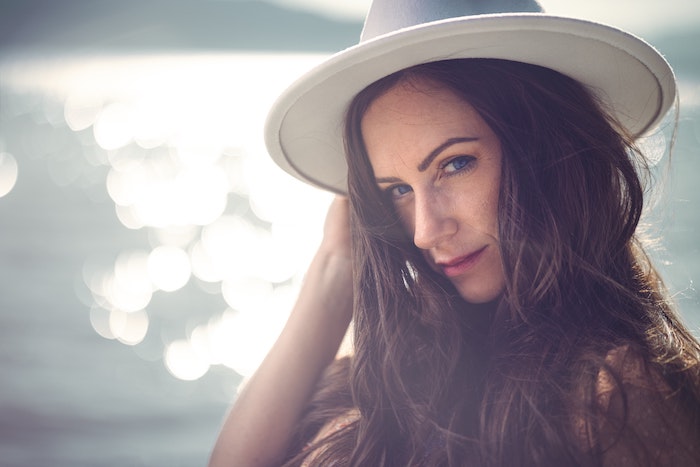
Which camera is best for portrait photography?
Mirrorless models have the advantage over DSLRs or compacts. That’s because of better sensor resolution, frame rate, and Dual Pixel AF II autofocus. The Canon R3, R5, and R6 are good cameras. But the Canon R5 has the benefit of a larger sensor for sharper detail. That probably makes it the best Canon camera for portraits.
Which Canon camera is best for a portrait photoshoot?
The top mirrorless Canon cameras have the advantage over DSLRs. That’s especially true if you’re looking for something that will stand you in good stead over the next five or ten years. But a DSLR and one of Canon’s L-series lenses will give you high-quality portraits and won’t disappoint you.
Is the Canon PowerShot good for portraits?
If you only take selfies and snapshots at a wedding or birthday party, a PowerShot G7 X Mark III is fine. Just take a couple of spare batteries! But the small 1-inch type sensor struggles to produce sharp images. And the fixed lens also means you don’t have as much flexibility. You can’t choose your focal length. That means no candid close-ups from long range.
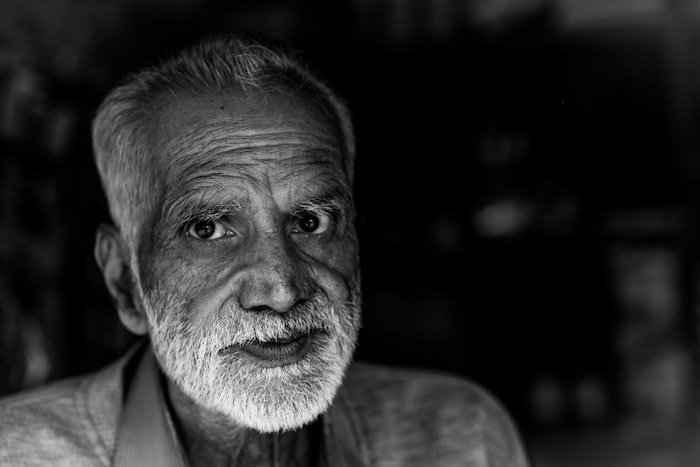
What series of Canon lenses are best for portraits?
For years, Canon’s L-series lenses have offered professional levels of sharpness and performance. The company is also now turning out more and more native lenses for their mirrorless Canon cameras. Portrait photographers are looking for lenses that create a flattering look. That’s best achieved with a slightly compressed medium telephoto lens of around 85mm.
Which Canon lens is best for portraits?
For a mirrorless Canon camera, it is the Canon RF 85mm F1.2L USM. It’s the perfect focal length, and the wide maximum aperture means you can easily blur out distracting backgrounds. It also has fast, quiet AF motors. Plus, a circular aperture lets you capture smooth background bokeh. But it is expensive. There’s also a version for the EF lens mount if you have a DSLR, which is the Canon EF 85mm f/1.2L II USM.
What does EOS stand for in Canon?
EOS stands for “electro-optical system’.” It refers to Canon’s range of “single lens reflex” (SLR) and mirrorless cameras. The first model was the Canon EOS 650, launched in 1987. All EOS cameras used 35 mm film until October 1996. Then the EOS IX came out. It used APS-C film. All new EOS cameras have been digital since 2005. After Canon introduced the EOS M in 2012, it has also been making mirrorless interchangeable lens cameras. This includes the Canon R3, R5, and R6.
Still undecided? Try compare camera specs of different brands and models for inspiration. You can check out our Canon R3 vs R5, Canon R3 vs Sony Z9, or Canon R5 vs Sony a7R IV side-by-side comparisons to start!













